- Garden Notes
- Posts
- From Squash to Cloves: Working Ahead of the Frost
From Squash to Cloves: Working Ahead of the Frost
Winter squash is coming off the vine while garlic goes in the ground; here’s how we’re preparing as the first frost draws near.
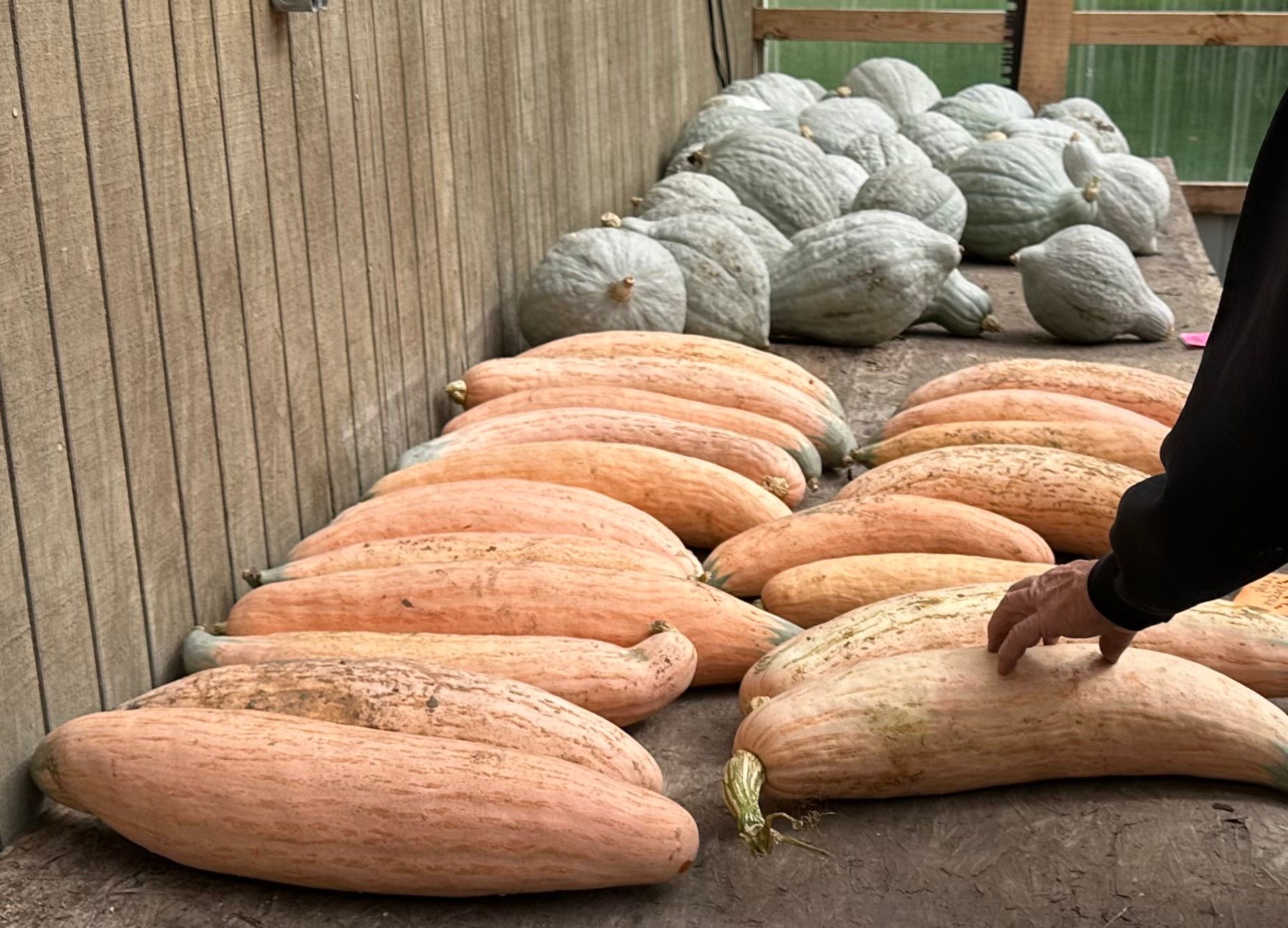
Hubbard squash and North Georgia candy roaster squash curing in the greenhouse
Between Harvest and Highways
Before the frost settles in, I’m finishing the last of the squash harvest and working compost into the garlic beds. Winter squash are curing in the shed, and the soil’s turned rich and ready for cloves to go in.
Once everything’s in order on the homestead, it’ll be time to hit the road with Grandpa. A few days of windshield time and long miles out west sounds just right. Time for reflection, laughter, and the kind of quiet wisdom you only find rolling down the highway.
Reading the Signs: When Butternut Squash Is Ready to Pick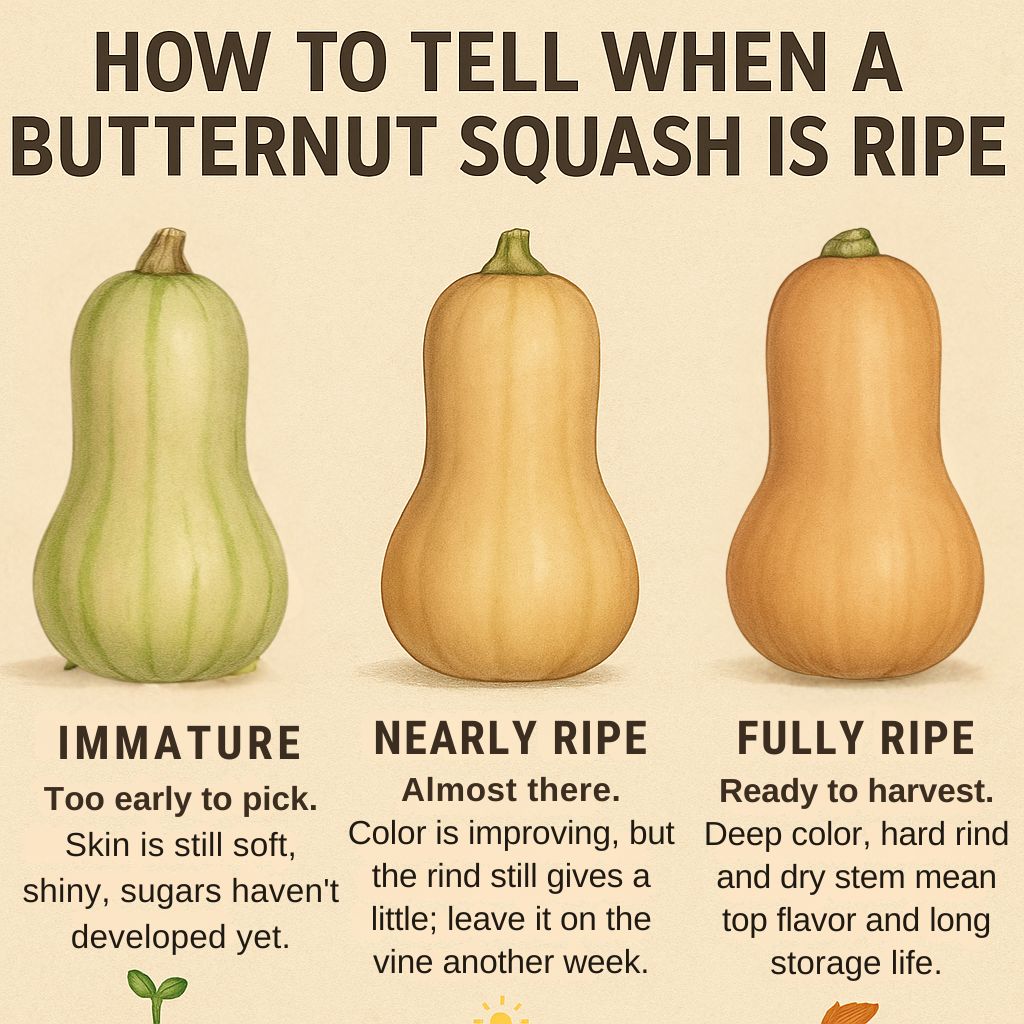 color changes as a butternut squash ripens When you’ve grown squash long enough, you stop relying on the calendar and start reading the plants. Butternut squash tells you when it’s ready: the rind deepens to a warm, matte tan, the skin grows firm, and the stem turns dry and woody. The surest test is with your fingernail: when you press against the rind and it won’t pierce or scratch easily, that squash has hardened enough to store. Over the years, I’ve learned to trust those signs more than any date on the seed packet. Pick too soon, and the flavor stays flat; wait too long, and moisture can have the fruit rot on the vine. | 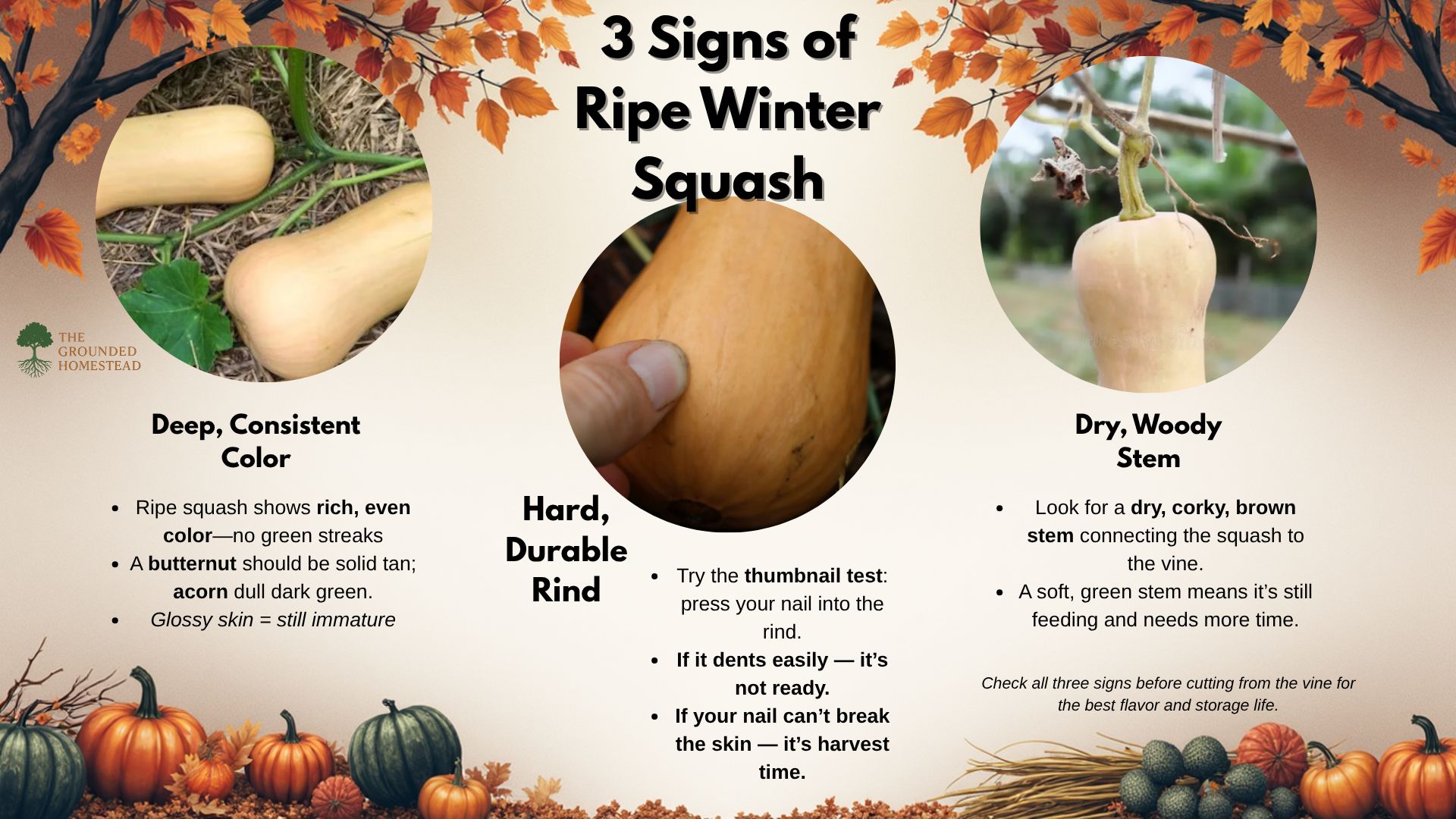 These three signs—color, rind hardness, and stem dryness—are the universal language of ripeness. If you’re unsure, this week’s full post walks through how to spot ripeness across the most common types—Butternut, Acorn, and Spaghetti—so your harvest holds strong and your storage squash stays sweet through winter. See the full breakdown here. |
Garlic’s Hidden Threat: Stopping Fusarium from Wrecking the Bulbs
Of all the garlic diseases I’ve seen over the years, Fusarium basal rot is the one that sneaks up quiet and ruins the most promise. It starts in heavy, waterlogged soil—right at the base where the bulb meets the roots—and once it’s in there, it spreads fast.
By the time you notice yellowing leaves or soft spots at the bulb, it’s already too late.
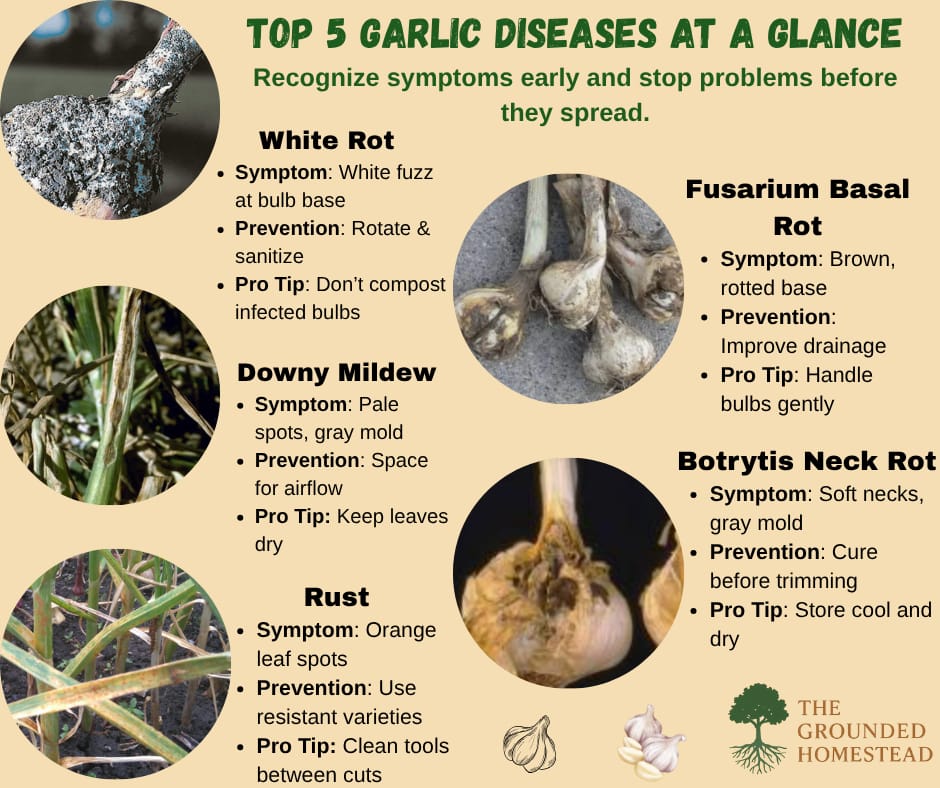
The real solution starts before planting. Garlic likes moisture, not saturation. I work rich compost deep into the beds to keep the soil loose and draining freely, and I never plant where water stands after a hard rain. Rotating garlic beds each year and avoiding low, compacted spots helps keep that pathogen from taking hold.
Strong bulbs start with sound soil. Keep it well-drained, organically fed, and ready to breathe. When the freeze finally hits, you’ll know your cloves are tucked into ground that’s clean, dry, and ready to grow.
If your garlic didn’t produce as well as you wanted this year, check and see if another disease may have impacted your harvest:
Season Veggie Recipe
Herb and Garlic Skillet Chicken with Pan Drippings
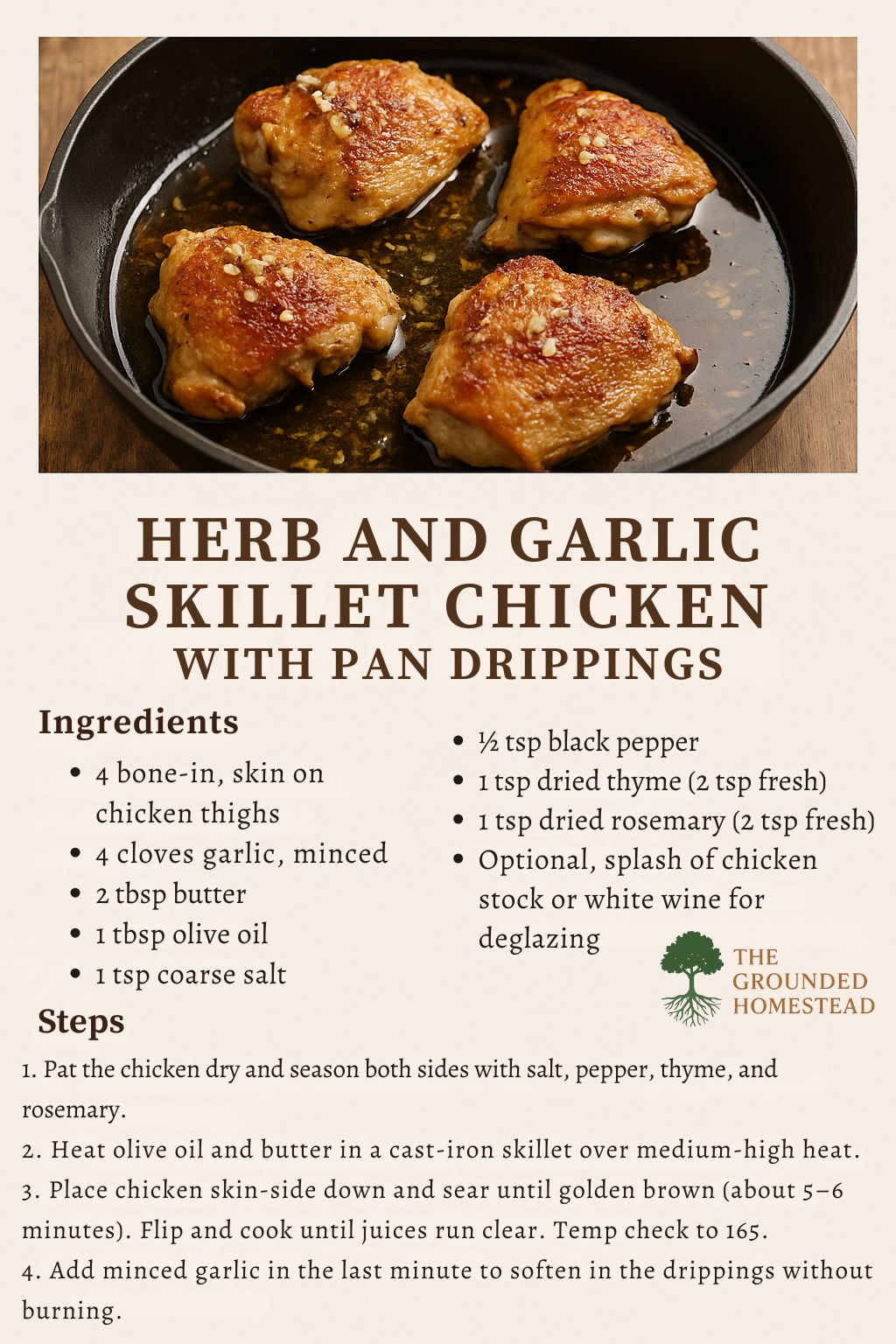
This herb and garlic skillet chicken checks every box—crispy skin, tender meat, and pan drippings rich enough to pour right over roasted vegetables or mashed potatoes. It’s homestead cooking at its best: a few fresh herbs, a little butter, and a hot cast-iron skillet.
Ingredients
4 bone-in, skin-on chicken thighs
4 cloves garlic, minced
2 tbsp butter
1 tbsp olive oil
1 tsp coarse salt
½ tsp black pepper
1 tsp dried thyme (or 2 tsp fresh)
1 tsp dried rosemary (or 2 tsp fresh)
Optional: splash of chicken stock or white wine for deglazing
Steps
Pat the chicken dry and season both sides with salt, pepper, thyme, and rosemary.
Heat olive oil and butter in a cast-iron skillet over medium-high heat.
Place chicken skin-side down and sear until golden brown (about 5–6 minutes). Flip and cook until juices run clear.
Add minced garlic in the last minute to soften in the drippings without burning.
Deglaze the pan with a splash of stock or wine, scraping up the browned bits for a quick pan sauce.
Serve hot with roasted fall vegetables or mashed potatoes. Try it this week while the frost settles and the evenings stretch long—it’s the kind of meal that warms the house and slows the pace.
Closing Tip
The last chores before winter always feel slower. That’s a good thing. Each small task—tying down a tarp, stacking wood, tucking in the garlic—marks the quiet shift from growing to keeping.
The Grounded Homestead